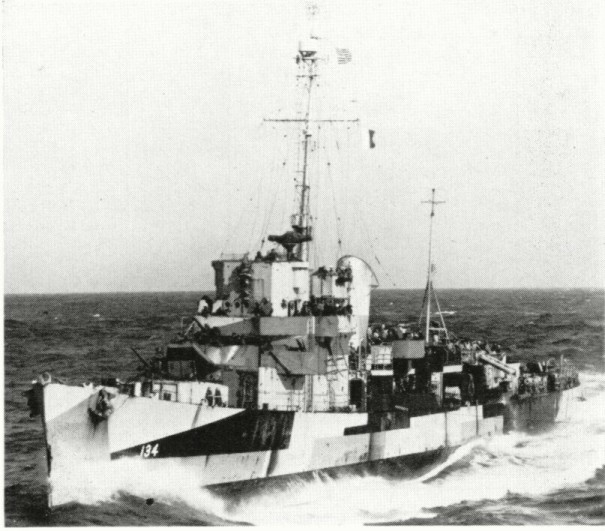along with HMS Encounter and USS Pope
I didn’t see this posted
The cruiser HMS Exeter, best known for its valiant role in the Battle of the River Plate when it hunted down the pride of the German navy, the Admiral Graf Spee, was located by divers searching the Java Sea.
The British vessel was sunk on March 1, 1942, when, with two escorts, the destroyer HMS Encounter and the American destroyer Pope, it was intercepted by nine Japanese warships.
All three Allied ships were lost in the action. The wreck of Encounter, which had passed up a chance to escape by turning back in a brave but futile attempt to protect Exeter, has also now been located.
The two warships were found in Indonesian waters, at a depth of about 200ft, 90 miles north of Bawean Island, and 60 miles from the sinking position given by Exeter’s captain, Oliver Gordon, in a book written after the war.
Exeter’s discovery follows a six-year search and means the last of the Second World War’s most celebrated warships sunk in the conflict has now been located.
Examinations of the wreck have provided historians with vital new insights into the ship’s final battle, one of the war’s least known naval encounters.
The divers, for instance, found many of its guns were at low elevation, indicating how close in the Japanese ships had got, and the extent to which Exeter was encircled and outgunned.
They also discovered the extent of the damage to the ship, testimony not only to the ferocity of fire it faced in its final moments but also to its remarkable resilience and ability to withstand enemy attacks that had served it well in its monumental battle against the Graf Spee earlier in the war.
In December 1939, Exeter had been part of the “hunting group” of three Allied warships that cornered the larger, more powerful Graf Spee off the coast of South America.
Exeter took the brunt of Graf Spee’s salvoes, drawing fire away from the cruiser Ajax and the New Zealand cruiser Achilles, which were fitted with less armour.
More than 60 of Exeter’s crew were killed and 33 wounded as it was hit more than 100 times in 22 minutes. After sustaining serious damage, Exeter was forced to withdraw.
However, one of its shells was able to exact some retribution. So while Exeter limped to the Falkland Islands for repairs, the damaged Graf Spee, unable to outrun its pursuers, headed into the neutral Uruguayan port of Montevideo.
Misled by the British about the number of ships now waiting, the Graf Spee’s captain, Hans Langsdorff, scuttled his ship outside the harbour. Its sinking was an important propaganda success for Britain and the country’s first victory of the war.
It also removed a lethal threat to the Allies’ merchant ships and allowed warships to be deployed elsewhere.
Exeter underwent an extensive refit and was later sent to the Far East.
On February 27, 1942, it was badly damaged in the Battle of the Java Sea, the largest surface engagement since Jutland in the First World War. It was ordered to a friendly port for repairs with its two escorts, but they were intercepted by a much larger Japanese fleet.
In the ensuing action, called the Second Battle of Java, Exeter was damaged by gunfire and a torpedo. It lost power and was finally scuttled by its crew.
From HMS Exeter, about 50 were killed, while 650 were made prisoners of war. Of these, 152 would die in Japanese PoW camps. About eight of HMS Encounter’s crew were killed, and 149 were made prisoner, of whom 38 would die in captivity. The wreck of the Pope, on which one crew member was killed, has yet to be found.
The British ships were located by a team of American and Australian explorers last year, but it was only after filming them and carrying out surveys last month that they were able to confirm their identities.
Kevin Denlay, a diver and photographer with the expedition, said: “The ship’s crew clearly put up a hell of a fight, and I think it’s only right their sacrifice is remembered. These Pacific battles are pretty much forgotten, perhaps because the Allies lost them. But we can now learn more about them and correct that.”
They attached a Royal Navy ensign to Exeter’s port torpedo tube in memory of crew lost either in the battle or during captivity, before being taken home for eventual presentation either to the current HMS Exeter or to the HMS Exeter Survivors Association.
The Ministry of Defence has been informed and is working with Indonesian officials on protection of the sites.
Fred Aindow, 88, of Preston, was a 21-year-old able seaman in charge of a gun turret on Exeter when it sank. “We were firing until the last moment,” he said. “I think we were the last to stop. Then it was over the side and I hung on to an oar for an hour until I was picked up. The next three years were sheer hell.”
“It’s great news that they’ve found Exeter. I’d like to dive down myself and get my shoes from my locker that I had only just bought.”
Commander Paul Brown, from the current HMS Exeter, said: “This is very much a reminder of the sacrifices made by our predecessors in these gallant ships.”
Robin Brooks, a marine artist, from Crediton, Devon, is helping to co-ordinate events for veterans to commemorate the Exeter’s discovery.
He said: “It’s a Navy story that carries on to this day and still affects the survivors’ children.”
Tom Jowett, from the HMS Exeter Survivors Association, added: “This is great news but it is important now to make sure the wreck is properly respected.”
Family and friends of the ship’s veterans who would like to learn more can contact Mr Brooks through his website www.robin-brooks.com or Mr Jowett on tj@blackpool.ac.uk.

HMS Exeter

HMS Encounter

USS Pope
war grave photos [URL=“http://www.robin-brooks.com/special-ships/marine-paintings-hms-exeter-1931-1942.shtml”]here](http://www.telegraph.co.uk/news/worldnews/asia/indonesia/1975561/Wartime-naval-legend-HMS-Exeter-found-off-Java.html)
